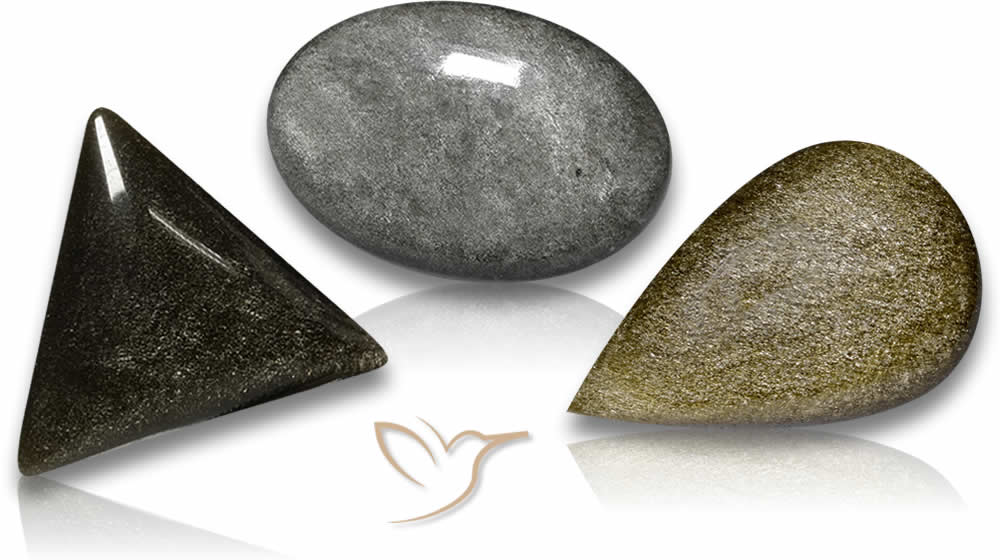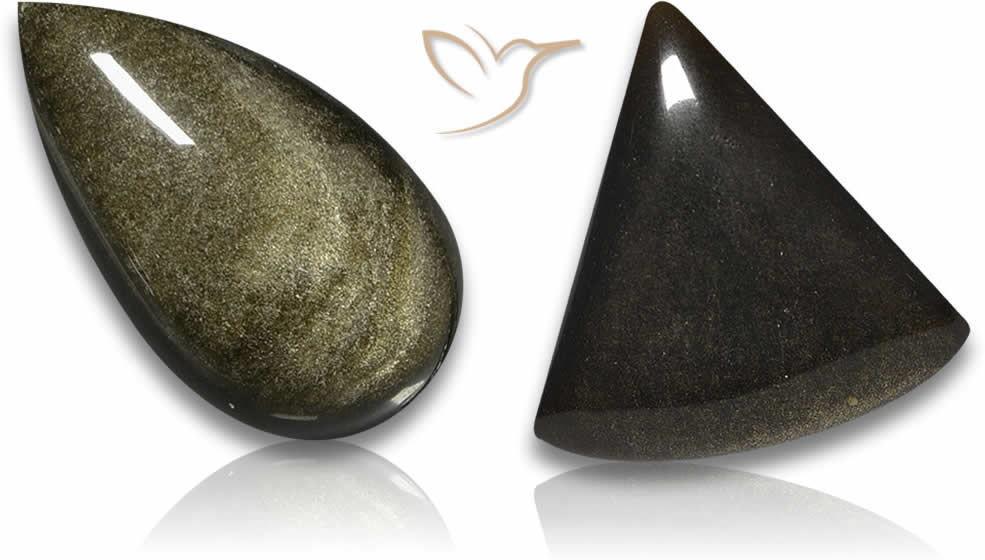Verre volcanique d'obsidienne : la merveille de la nature

Bienvenue dans notre exploration du matériau fascinant appelé verre volcanique d'obsidienne . Cette merveille naturelle se forme lorsque la lave refroidit rapidement, créant un matériau lisse et brillant semblable à du verre.
Le verre volcanique d'obsidienne peut être disponible dans une gamme de couleurs, notamment le noir, le marron et le vert. Il est connu pour ses arêtes vives et sa surface lisse, ce qui en fait un matériau unique avec de nombreuses applications pratiques et artistiques.
Points clés à retenir:
- Le verre volcanique d'obsidienne est une merveille naturelle formée à partir de lave rapidement refroidie.
- Il est connu pour ses arêtes vives et sa surface lisse, ce qui en fait un matériau unique.
- Le verre volcanique d'obsidienne peut être trouvé dans une gamme de couleurs, notamment le noir, le marron et le vert.
- Ce matériau a de nombreuses applications pratiques et artistiques.
- Notre exploration du verre volcanique d'obsidienne approfondira ses propriétés, ses utilisations et ses avantages potentiels pour les pratiques de guérison holistiques.
Consultez notre stock actuel d’obsidienne à vendre ici.
Propriétés du verre volcanique obsidienne
Le verre volcanique obsidienne présente un éventail de propriétés uniques qui le distinguent des autres matériaux. Sa composition varie en fonction du type spécifique d'obsidienne et varie de 70 à 75 pour cent de dioxyde de silicium, avec de plus petites quantités d'oxydes de magnésium et de fer, et des traces d'autres éléments.
La densité du verre volcanique d'obsidienne varie entre 2,4 et 2,6 grammes par centimètre cube, ce qui le rend relativement léger par rapport à ses homologues métalliques de taille similaire. Sa dureté varie de 5 à 5,5 sur l'échelle de Mohs, ce qui est relativement faible par rapport aux autres pierres précieuses. Cependant, malgré sa dureté relativement faible, le verre volcanique obsidienne possède une extraordinaire netteté, ce qui le rend précieux pour certaines applications.
L’une des propriétés distinctives du verre volcanique est sa fracture conchoïdale, ce qui signifie qu’il se fissure le long de surfaces lisses et incurvées. Ce motif de fracture unique crée des arêtes vives lorsque l'obsidienne est ébréchée ou brisée, ce qui en fait un matériau précieux pour créer des outils et des armes à travers l'histoire.
| Propriété | Description |
|---|---|
| Composition | 70 à 75 % de dioxyde de silicium, de plus petites quantités d'oxydes de magnésium et de fer et des traces d'autres éléments |
| Densité | 2,4 à 2,6 grammes par centimètre cube |
| Dureté | Échelle de 5 à 5,5 Mohs |
| Modèle de fracture | Le motif de fracture conchoïdale crée des arêtes vives lorsqu'il est ébréché ou cassé |
Pratiquement transparent en fines pièces, le verre volcanique d'obsidienne affiche souvent une gamme de couleurs et de motifs vifs, ce qui en fait un matériau populaire pour les objets de décoration et les bijoux. Bien qu'ils n'aient pas le feu et l'éclat des pierres précieuses, les bijoux en obsidienne ont leur charme et leur caractère uniques, en particulier lorsqu'ils sont associés à des pierres et des métaux précieux complémentaires.
Dans l’ensemble, le verre volcanique d’obsidienne se distingue comme un matériau doté de propriétés fascinantes, de modèles de fracture uniques et d’une netteté distincte, ce qui en fait une merveille naturelle fascinante.
Utilisations du verre volcanique d'obsidienne

Le verre volcanique d'obsidienne est utilisé depuis des siècles à diverses fins pratiques et artistiques. Sa dureté et son tranchant exceptionnels ont conduit à son utilisation intensive comme arme par des civilisations anciennes telles que les Mayas et les Aztèques. Dans les temps modernes, l’obsidienne a trouvé sa place dans de nombreuses industries en raison de ses propriétés uniques.
Industrie médicale
L'industrie médicale utilise l'obsidienne pour son tranchant et sa précision dans les instruments chirurgicaux, tels que les scalpels. En plus d'être incroyablement tranchante, l'obsidienne est non toxique et ne réagit pas avec les fluides corporels, ce qui la rend idéale pour les applications médicales.
Bijoux et objets de décoration
L’apparence saisissante de l’obsidienne en fait un choix populaire pour les bijoux et les objets décoratifs. Le verre volcanique naturel est transformé en magnifiques colliers, bagues, boucles d'oreilles et pendentifs, seul ou combiné avec d'autres matériaux tels que l'argent et l'or. La brillance, la couleur et la texture uniques de l'obsidienne en font un matériau hautement recherché tant par les artisans que par les collectionneurs.
Pratiques de guérison holistiques
De nombreuses personnes croient que le verre volcanique d'obsidienne possède des propriétés curatives qui peuvent améliorer le bien-être émotionnel et offrir une protection contre les énergies négatives. Selon les praticiens métaphysiques, l'obsidienne aide à libérer les émotions négatives telles que la colère, la peur et le ressentiment, favorisant ainsi un sentiment de paix intérieure et de calme.
Utilisations industrielles
La teneur élevée en silice et la faible viscosité de l'obsidienne en font un matériau utile pour la production de câbles à fibres optiques. La silice est un composant crucial de la fibre optique et sa faible viscosité aide à empêcher la diffusion de la lumière à l'intérieur du câble, conduisant ainsi à une meilleure transmission du signal. L'obsidienne est également utilisée dans la fabrication d'électrodes de verre à haute pression et dans la production de béton à haute résistance.
En conclusion, le verre volcanique d’obsidienne a un large éventail d’applications, allant des armes anciennes aux utilisations industrielles modernes. Son tranchant, sa dureté et son aspect unique en ont fait un matériau précieux et très prisé à travers l’histoire.
La beauté des bijoux en obsidienne
Le verre volcanique d'obsidienne est depuis longtemps admiré pour son attrait visuel saisissant. Les propriétés uniques de ce matériau le rendent particulièrement intéressant pour une utilisation en bijouterie, où il peut être transformé en une grande variété de designs mettant en valeur sa beauté naturelle.
À la base, les bijoux en obsidienne sont une question de contraste. Le noir profond et riche du verre volcanique peut être associé à des accents métalliques brillants, des pierres précieuses brillantes ou d'autres couleurs et textures complémentaires pour créer des pièces qui attirent le regard et captivent l'imagination.
Mais l’attrait des bijoux en obsidienne va au-delà de leurs seules qualités esthétiques. De nombreuses personnes croient également que ce matériau possède une gamme de propriétés métaphysiques qui peuvent être bénéfiques pour les pratiques de guérison holistiques. Certaines des propriétés curatives les plus couramment attribuées à l’obsidienne comprennent :
"On dit que l'obsidienne est une pierre protectrice, aidant à protéger celui qui la porte des énergies négatives et favorisant un sentiment de force intérieure et de clarté. On pense également qu'elle aide à libérer les émotions négatives et à favoriser des sentiments de paix et d'équilibre."
| Propriétés métaphysiques de l'obsidienne | Des bénéfices potentiels |
|---|---|
| protection | Se protéger des énergies négatives |
| Guérison émotionnelle | Libération des émotions négatives, promotion de la paix et de l'équilibre |
| Mise à la terre | Connexion à la terre, promotion de la stabilité et de la sécurité |
Que vous soyez attiré par les bijoux en obsidienne pour leur beauté saisissante ou leurs propriétés curatives potentielles, on ne peut nier l'attrait de ce matériau unique. Des pièces simples et élégantes aux designs plus élaborés comportant des motifs complexes et de superbes pierres précieuses, les bijoux en obsidienne offrent quelque chose à tous ceux qui apprécient la beauté saisissante du verre volcanique naturel .
Le verre volcanique d'obsidienne dans la vie quotidienne
Le verre volcanique d'obsidienne n'est pas seulement un matériau fascinant aux propriétés uniques ; elle a également le potentiel d’améliorer notre vie quotidienne de plusieurs manières. Ci-dessous, nous explorerons certains des avantages de l’incorporation de l’obsidienne dans nos routines :
Bien-être émotionnel
Beaucoup pensent que l’obsidienne possède des propriétés curatives qui peuvent contribuer à la guérison émotionnelle et spirituelle. On dit qu’elle aide à atténuer les sentiments de colère, de ressentiment et de peur, favorisant ainsi la maîtrise de soi et la paix intérieure. Certains l’utilisent même comme outil d’ancrage lors de la méditation ou des pratiques spirituelles.
Protection contre les énergies négatives
On pense que l’obsidienne a une qualité protectrice qui peut bloquer les énergies négatives et les attaques psychiques. On dit que ses bords tranchants aident à couper les cordons et à libérer les attaches négatives, ce qui en fait un choix populaire pour la protection personnelle.
Autres bénéfices
On pense également que l’obsidienne présente d’autres avantages, tels que l’amélioration de la digestion et de la circulation, la réduction du stress et de l’anxiété et la promotion d’un meilleur sommeil. Bien que des recherches supplémentaires soient nécessaires pour confirmer ces affirmations, beaucoup trouvent que l’utilisation de l’obsidienne est un ajout précieux à leur routine globale de bien-être.
Conclusion

Alors que nous concluons notre exploration du verre volcanique d’obsidienne, nous restons impressionnés par la merveille naturelle qu’il s’agit. Nous avons découvert ses propriétés uniques, ses origines et les nombreuses utilisations qui en ont fait une ressource précieuse tout au long de l’histoire et jusqu’à aujourd’hui.
De l’art à la médecine, le verre volcanique d’obsidienne a enrichi de nombreux domaines de nos vies. Sa beauté a inspiré la créativité, sa netteté a servi à des fins pratiques et ses propriétés métaphysiques potentielles ont offert des effets potentiellement bénéfiques pour le bien-être émotionnel et les pratiques spirituelles.
Alors que nous continuons à apprécier la beauté et la fonctionnalité du verre volcanique d’obsidienne, nous nous souvenons des vastes capacités de la nature. Ses merveilles et ses ressources continuent de nous fasciner et de nous enrichir, et nous avons hâte d'en découvrir davantage sur le monde naturel et tout ce qu'il a à offrir.
FAQ
Qu'est-ce que le verre volcanique d'obsidienne ?
Le verre volcanique d'obsidienne est un matériau naturel formé à partir de lave qui refroidit rapidement. C'est un type de verre volcanique riche en silice et dépourvu de structure cristalline, ce qui lui donne un aspect lisse et brillant.
Quelles sont les propriétés du verre volcanique obsidienne ?
Le verre volcanique d'obsidienne possède plusieurs propriétés notables. Il est extrêmement dur et cassant, avec un tranchant qui rivalise avec celui des scalpels chirurgicaux. L'obsidienne est également dense, avec une densité spécifique allant de 2,4 à 2,5.
Quelles sont les utilisations du verre volcanique obsidienne ?
Le verre volcanique d'obsidienne a été utilisé à diverses fins au cours de l'histoire. Dans les temps anciens, il était utilisé pour créer des outils et des armes en raison de son tranchant. Aujourd’hui, il est couramment utilisé dans la fabrication de bijoux, ainsi que pour les objets de décoration et les ornements.
Pourquoi les bijoux en obsidienne sont-ils populaires ?
Les bijoux en obsidienne sont populaires pour plusieurs raisons. Son aspect unique, avec sa surface sombre et brillante, en fait un choix remarquable pour les accessoires. De plus, l’obsidienne aurait des propriétés métaphysiques qui favorisent l’ancrage, la protection et la guérison émotionnelle.
Quels sont les avantages du verre volcanique obsidienne ?
On pense que le verre volcanique d’obsidienne présente divers avantages. On dit qu’il aide à libérer l’énergie négative, favorise la clarté de la pensée et aide à la guérison émotionnelle. Certaines personnes utilisent également l’obsidienne pour méditer et se protéger contre les attaques psychiques.






